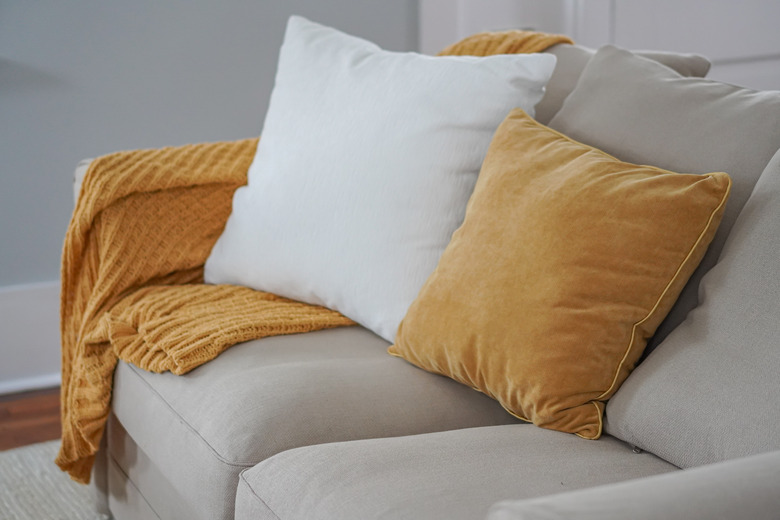How To Kill Mold In Couch Cushions
We may receive a commission on purchases made from links.
If your couch cushions appear persistently damp, with a musty odor and dark colored spots or patches, you likely have a mold problem. Mold grows on absorbent surfaces, and couch cushions present the perfect environment. Mold typically grows on cushions that have been left outdoors in wet weather or that have endured a liquid spill without properly drying. If you have moldy couch cushions, you can return them to a fungus-free state as long as the mold colony has not penetrated too deeply into the material.
Things Needed
-
Broom
-
Vacuum cleaner
-
Liquid detergent (optional)
-
1/2 cup water (optional)
-
1/2 cup rubbing alcohol or denatured alcohol (optional)
-
Sponge
-
Space heater (optional)
1. Dry the Cushions in Sunlight
1. Dry the Cushions in Sunlight
Place the cushions outdoors to dry, as long as there's no rain. The combination of sun exposure and outdoor air circulation will help the cushions to dry naturally, but depending on how deeply the moisture has saturated the cushions, the process may take several hours or even days. If mold has appeared elsewhere on the couch, move it outdoors to dry as well. If sunlight is scarce, use a portable heater to dry your couch cushions.
2. Remove Mold Spores
2. Remove Mold Spores
Brush the couch cushions with a broom. This will pull the dried spores away from the upholstery. Do this while still outdoors, because the mold spores will still have the potential to become active again later. Use a vacuum cleaner with a hose attachment or a handheld vacuum to remove the spores that dwell deeper within the material.
3. Mix a Cleaning Solution
3. Mix a Cleaning Solution
Squeeze a drop or two of liquid detergent into a cup of warm water if any mold or stains remain on the surface of the couch cushions. Alternately, mix 1/2 cup of water with a 1/2 cup of rubbing alcohol or denatured alcohol. You can find denatured alcohol at home improvement stores and paint supply stores. If using an alcohol solution, scrub an inconspicuous area of the couch or cushion to make sure that the fabric is not discolored. If alcohol changes the color, stick to the soapy-water method.
4. Scrub the Cushions
4. Scrub the Cushions
Dip a clean, soft sponge in the alcohol or soap solution. Wring out the sponge as tightly as you can to remove all excess liquid and stop it from dripping. Scrub the couch cushions with your damp sponge. Rinse away the soap or alcohol by scrubbing with a second damp sponge.
5. Dry Cushions Before Using
5. Dry Cushions Before Using
Dry the cushions one last time. A portable heater can do the trick if sunlight is scarce. Return the cushions indoors only after you have removed all mold. If mold returns in the following days or weeks, throw away the cushions. This likely means that the mold colony is too deep within the material for you to effectively get rid of it.
